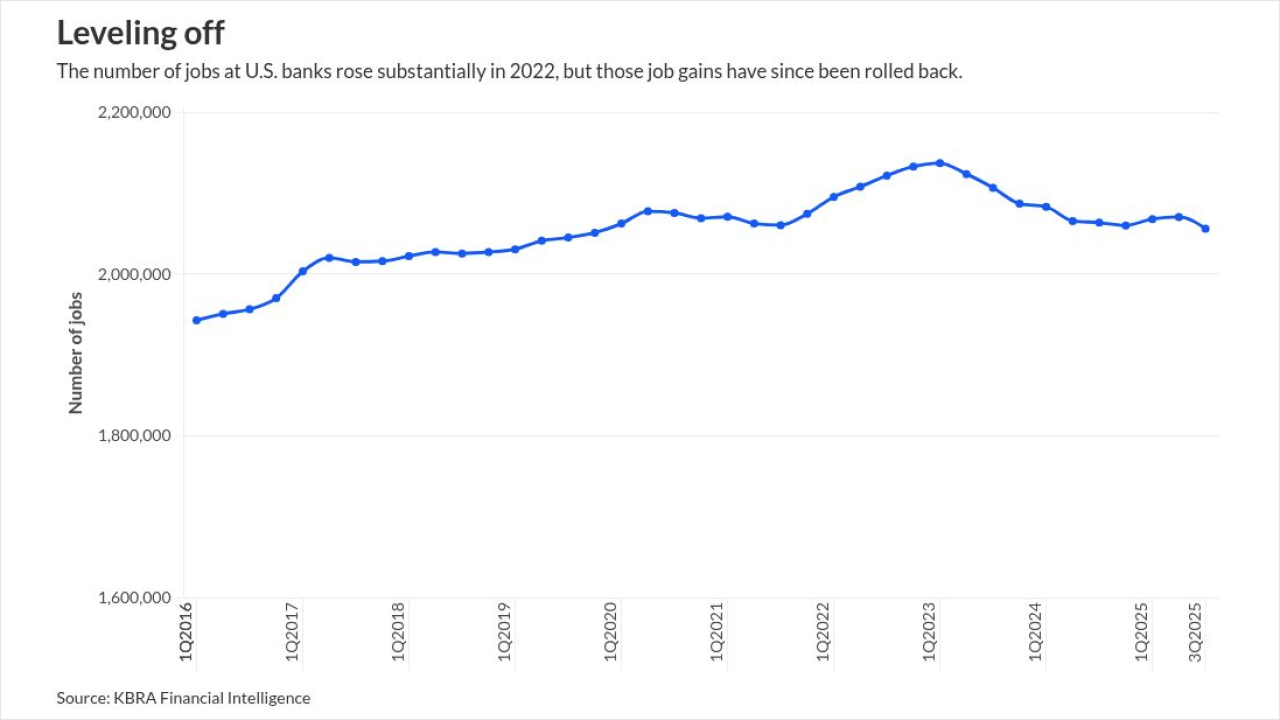Commerce Bancorp Inc.’s insurance unit will have to double its revenue over the next four years to achieve its goal of becoming one of the nation’s top 15 brokerage firms.
The No. 15 broker in 2005 was ABD Insurance and Financial Services, with revenue of about $165 million, to Commerce’s $88 million, according to Business Insurance.
Commerce Insurance Services fell one place in the magazine’s rankings last year. One disappointment was the derailment of its deal to buy BK International, an insurance broker in Greenwich, Conn.
Commerce announced the deal, which would have given it a leg up in Connecticut, in June 2005. It fell through because of “legal complications,” said George Norcross, the chairman and chief executive of Commerce Insurance Services.
He would not elaborate and said the company is forging ahead with a strategy of growing organically and by acquisition. Part of that strategy is to go after bigger customers.
“We are making ourselves a true competitor to the largest brokerage houses in our region and competing with the Willises and the Aons for national accounts,” Mr. Norcross said.
He said his 500-employee insurance unit is expected to post 2006 revenue growth of at least 10%. In the past year the 500-employee unit has hired several executives from Graham Co., Philadelphia’s largest insurer.
The hires include Michael Tiagwad, who was Graham’s president and is now the president of Commerce Insurance. Mr. Tiagwad has increased staff to help Commerce compete for larger customers. He has made 20 “high-level hirings,” Mr. Norcross said.
Kevin Mullen, also from Graham, was hired in July as an executive vice president in charge of the Cherry Hill, N.J., firm’s employee benefits practice. Employee benefits is Commerce Insurance’s fastest-growing business, Mr. Norcross said.
Terry Tracy was hired away from Graham in September to direct the services and consultancy offered to Commerce’s large, strategic customers.
Commerce has remained committed to the insurance business even as many banks have gotten out of it. Among those remaining in it, Wells Fargo & Co., BB&T Corp., and Wachovia Corp. are all in the top 10 by 2005 revenue, according to Business Insurance.
Commerce is still looking to acquire, Mr. Norcross said, but large, top-notch commercial insurance agencies have become harder to find because most banks have been looking for insurance acquisitions since deregulation in the late 1990s. “What’s left is not quite the same stock as before,” he said.
And there have always been far fewer employee benefits agencies to shop for, he said. Commerce’s employee benefits business, which includes everything from health insurance to human resources outsourcing, brings in 30% of its revenue and provides benefits to more than 600,000 people, Mr. Norcross said.
At midyear Commerce had $42.3 million of insurance brokerage fee revenue, according to Michael White Associates in Radnor, Pa. That put in ninth among bank holding companies with assets of more than $10 billion, five places higher than a year earlier.
Commerce Insurance is a strong contributor to Commerce Bancorp’ revenue; its insurance brokerage fee income accounts for 15.5% of the parent company’s noninterest income. The average for big banks is 5.7%, according to Michael White, the research and consulting firm’s president.
“There’s no question that they are performing very well,” Mr. White said.
Commerce had insurance brokerage fee income of $75.8 million last year, according to White Associates’ measurements. That was 14th among bank holding companies in its asset category, Mr. White said.
On the other hand, Commerce’s insurance fee income growth last year was 5.25%. The average for banks in its asset class was 14.2%.
Commerce will continue to use the cross-selling model that has helped its 10-year-old insurance business grow in size to exceed $1 billion of annual premiums, Mr. Norcross said.
In each of Commerce’s eight regional markets, the bank market manager works with the insurance market manager to identify cross-selling opportunities.
“It’s not just taking a customer list and writing letters to them,” Mr. Norcross said. “That’s never successful and typically only succeeds with retail products.”
A recent source of insurance growth is the premier client group. It has expanded from its base so that it now has representatives in all of Commerce’s main markets.





